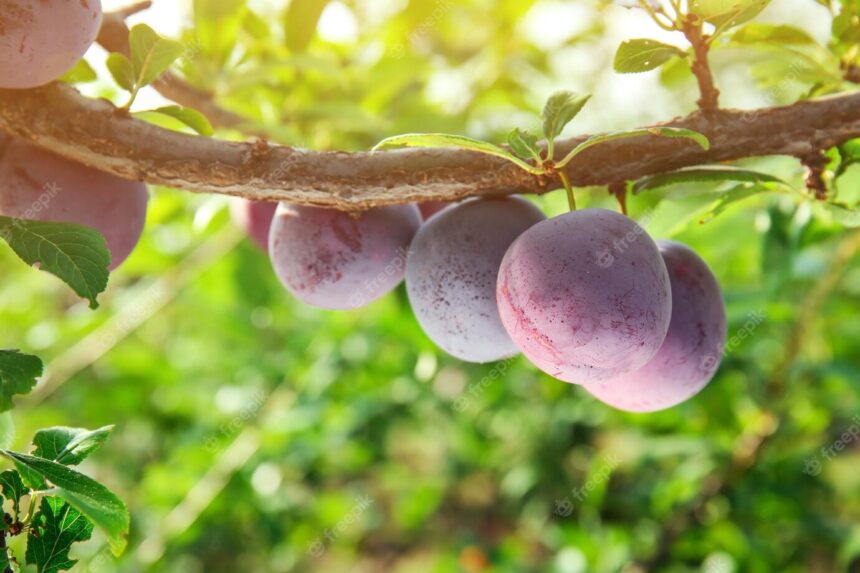When growing plums in South Africa, there are several infections and diseases that you should watch out for. Here are some common ones:
- Brown rot (Monilinia spp.):
Brown rot is a fungal disease that affects various stone fruit, including plums. It causes brown, rotting lesions on the fruit, which can spread rapidly, leading to fruit decay. To prevent brown rot, ensure good air circulation, practice proper pruning to open up the canopy, and remove infected fruit promptly. - Plum pox virus:
Plum pox virus (PPV) is a serious viral disease that affects stone fruit trees, including plums. It causes fruit deformation, leaf curling, and reduced yield. Infected trees should be promptly removed and destroyed to prevent the spread of the virus. - Shot hole disease (Wilsonomyces carpophilus):
Shot hole disease is a fungal infection that affects plum trees. It causes small, circular lesions on leaves, which later drop out, leaving holes that give the disease its name. Fungicide sprays and proper sanitation practices can help control shot hole disease. - Bacterial canker (Pseudomonas syringae pv. syringae):
Bacterial canker is a common disease in plum trees. It causes sunken, dark lesions on the bark and can lead to tree dieback and reduced yield. Pruning infected branches, copper-based sprays, and maintaining good tree health are important for managing bacterial canker. - Plum leaf curl (Taphrina pruni):
Plum leaf curl is a fungal disease that affects plum trees, causing curling, reddening, and distortion of leaves. It can severely impact tree vigor and fruit production. Fungicide treatments before bud swell in late winter or early spring can help control plum leaf curl. - Phytophthora root rot (Phytophthora spp.):
Phytophthora root rot is a soil-borne disease that affects many fruit trees, including plums. It causes root decay, stunted growth, and reduced yield. Proper drainage, avoidance of waterlogging, and using resistant rootstocks can help prevent Phytophthora root rot. - Verticillium wilt (Verticillium spp.):
Verticillium wilt is a fungal disease that affects a wide range of plants, including plum trees. It causes wilting, yellowing, and browning of leaves, and can eventually lead to tree death. There are no effective chemical treatments for Verticillium wilt, so it’s important to plant resistant varieties and practice crop rotation.
To effectively manage these infections and diseases, it is recommended to consult with local agricultural extension services or experts who can provide specific guidance based on the prevailing conditions in your area. They can help you develop an integrated pest management plan and recommend appropriate control measures.







